As you’ve no doubt heard by now, the Nebraska History Museum is celebrating the opening of a new exhibit later this month. The Ford Conservation Center helped to restore some of the artifacts that will be featured in the exhibit.
As you’ve no doubt heard by now, the Nebraska History Museum is celebrating the opening of a new exhibit later this month. Votes For Women: Nebraska’s Suffrage Story looks back at our state’s unique place in the history of the women’s suffrage movement, and some of the many women who broke barriers here.
A number of objects from the Museum’s collections were sent to our Ford Conservation Center to be treated ahead of the opening. One object was this silver framed mirror, awarded to Louise Pound, folklorist and professor at University of Nebraska-Lincoln, at a tennis doubles match in New York. The original prize was a smoking set, but when Louise and her partner won, she was awarded this silver mirror instead. She is said to have been disappointed and had hoped to take home the smoking set.
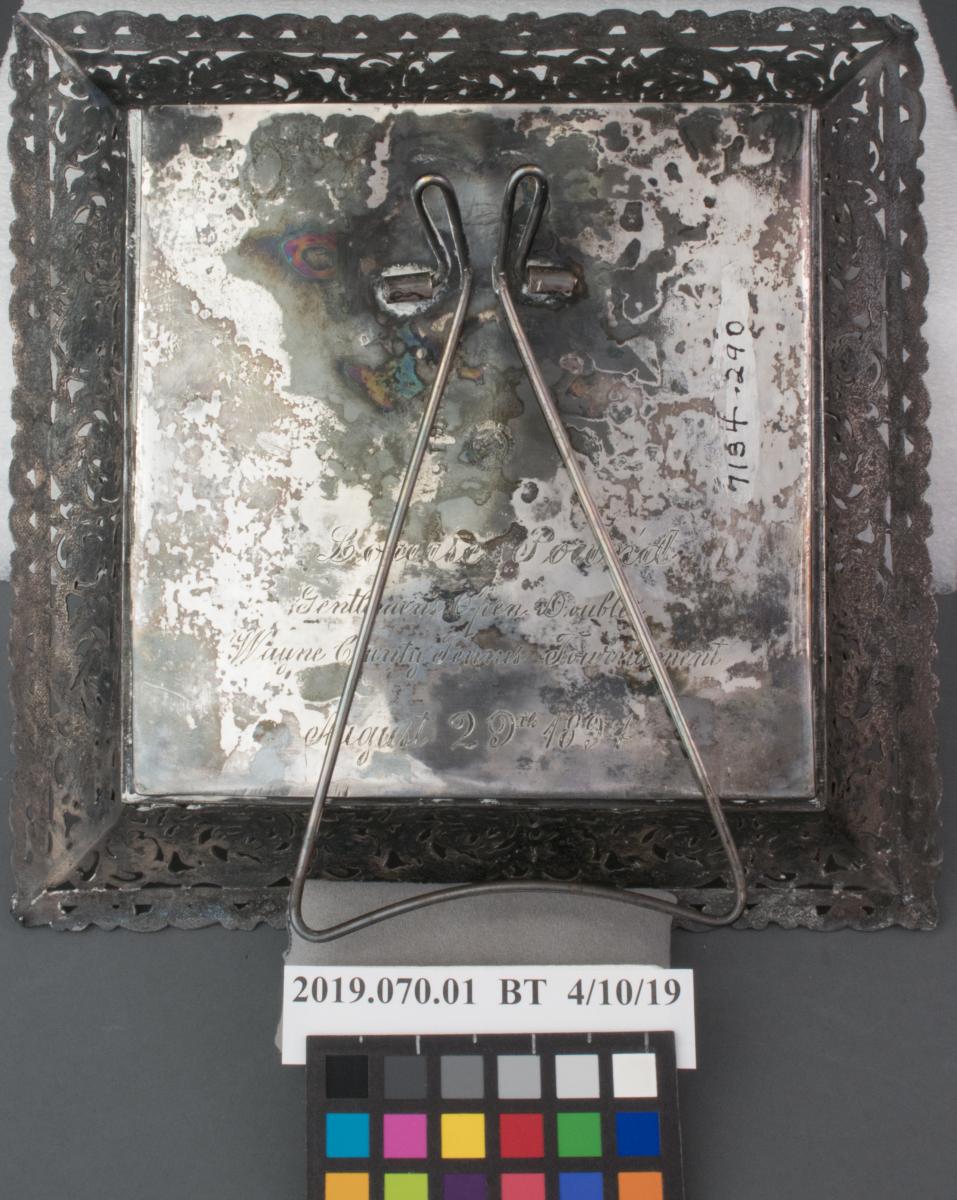
Before treatment photo of the back side of the silver mirror showing the tarnish that was later removed and the engraving that became more visible after treatment.
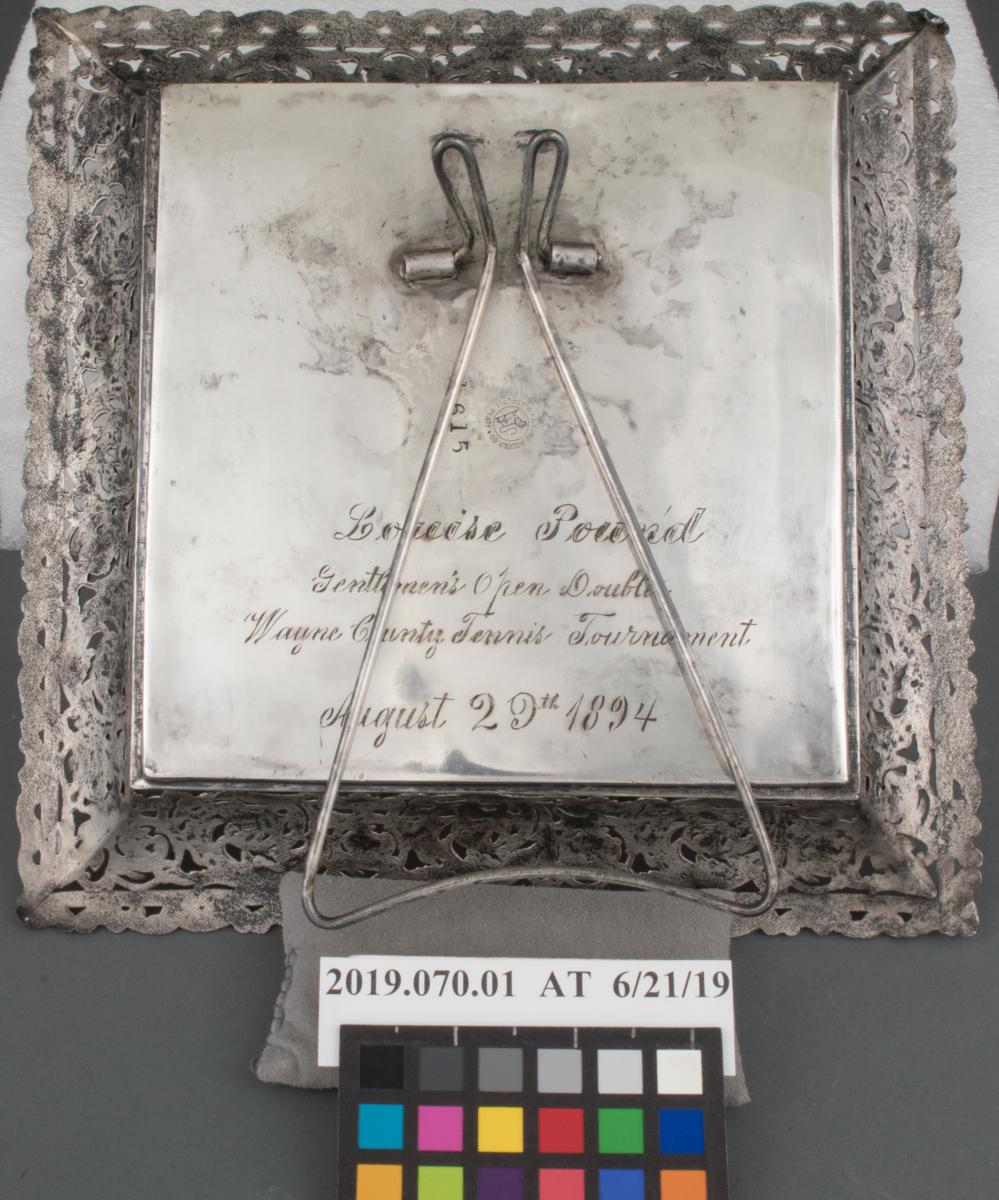
After treatment photo of the back side of the silver mirror showing the tarnish that was later removed and the engraving that became more visible after treatment.

Silver framed mirror won by Louise Pound in 1894, after treatment.
The mirror was highly tarnished when it was first brought to the Ford Conservation Center. It was thoroughly polished by our conservators and coated with a lacquer to inhibit corrosion in the future.
A more macabre object was this death mask of Edward Rosewater. He was a member of the Nebraska State Legislature in 1870 and went on to publish the Omaha Bee newspaper. He was a controversial figure and opposed Women’s Suffrage. He debated Nebraska suffragist Clara Bewick Colby in 1881 and Susan B. Anthony the following year.
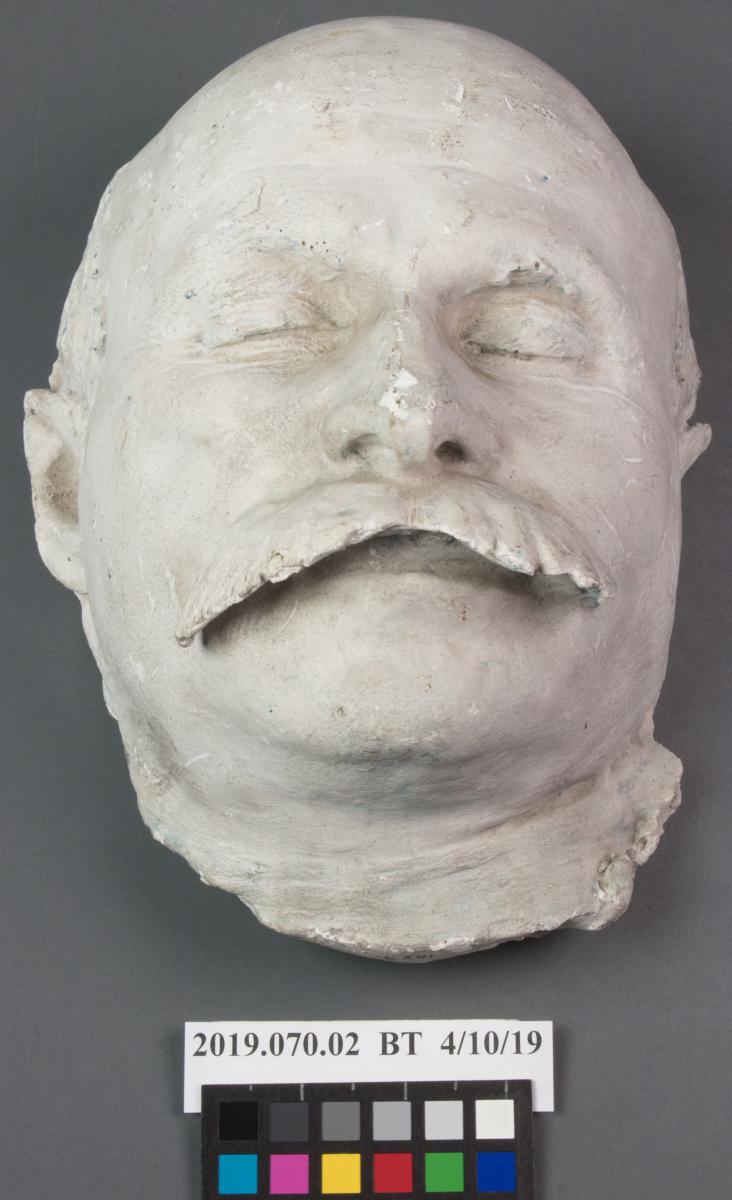
Rosewater’s death mask, before treatment. Note the dirt and sections of erosion.
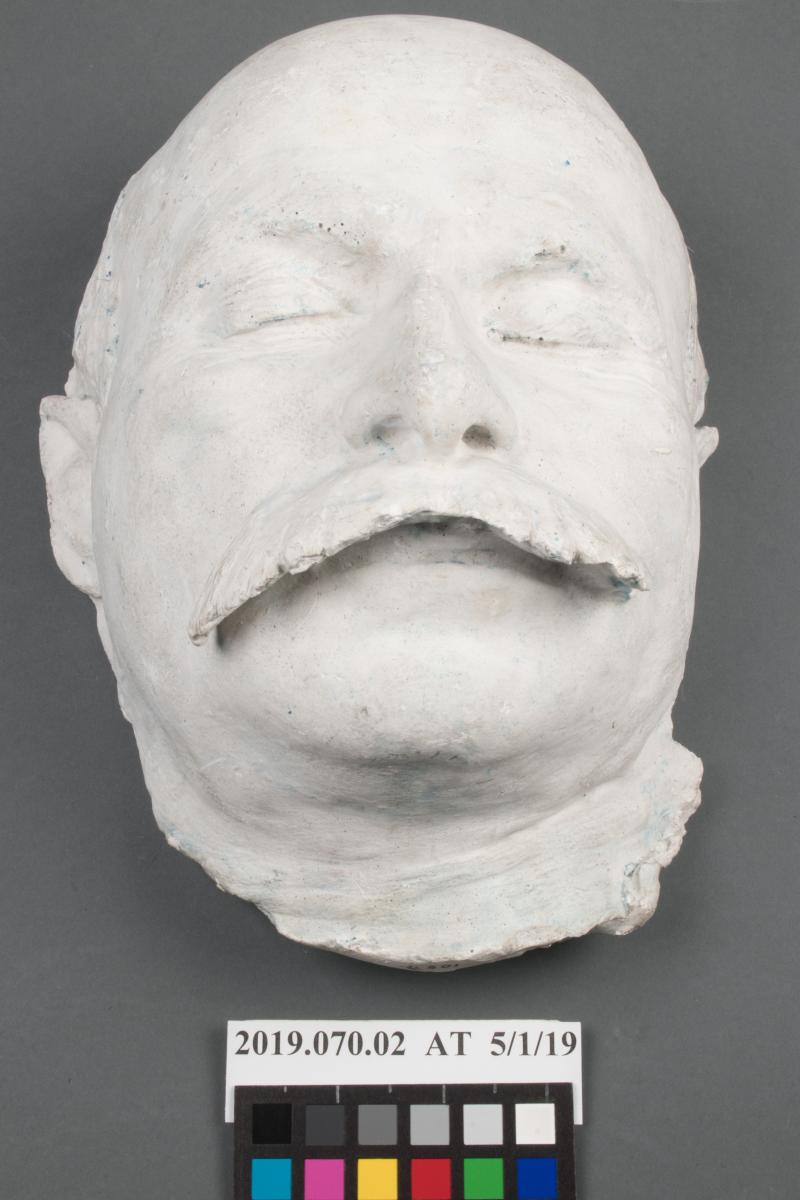
Rosewater’s death mask, after treatment.
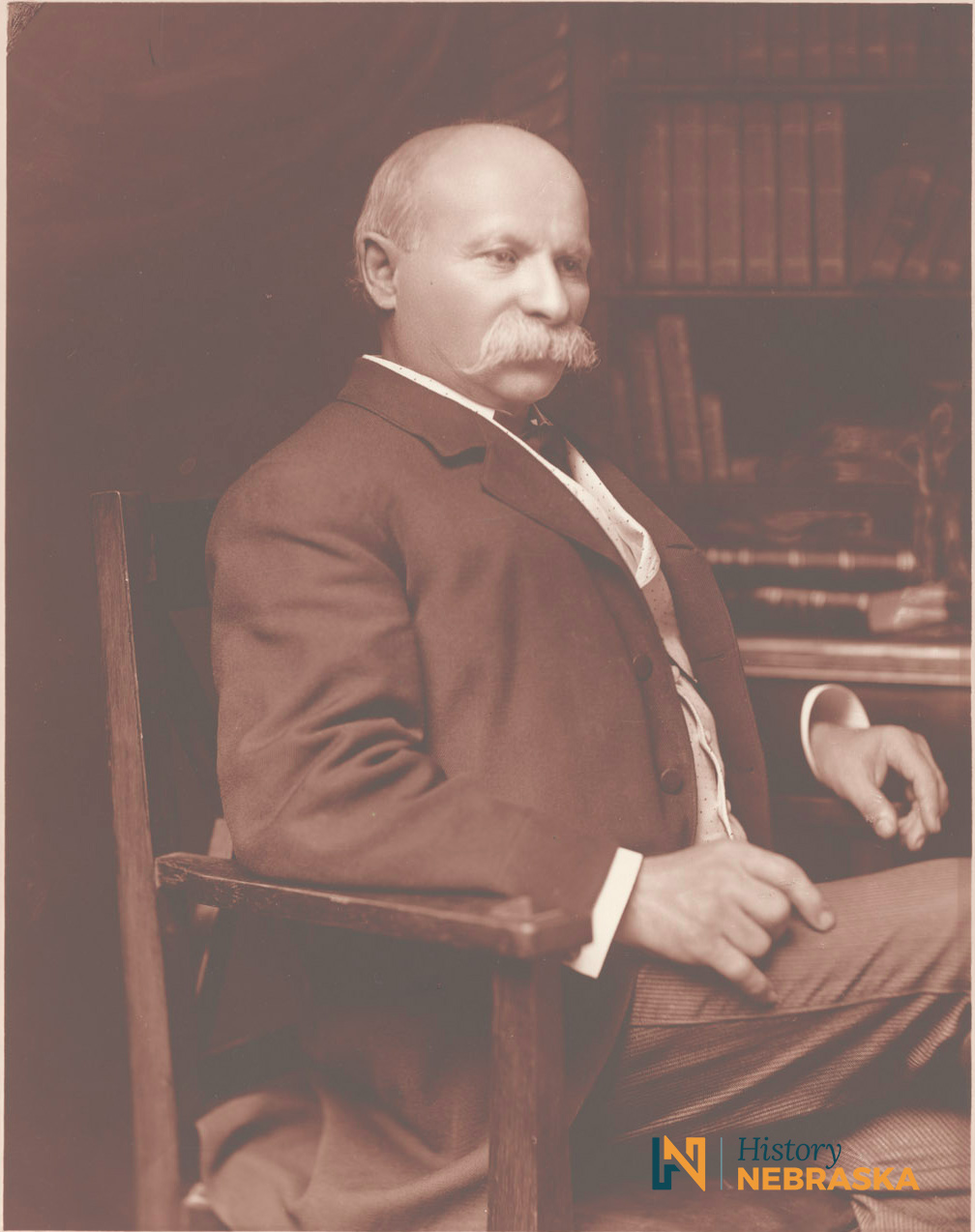
Edward Rosewater as he appeared in life.
The mask was made by J. Laurie Wallace a few hours after Rosewater’s death on August 30, 1906. His mustache hairs are still present in the plaster. The painted surface was eroded, and there was a significant amount of dirt and grime on the surface of the mask overall. The mask was vacuumed to remove loose dust and a kneaded rubber eraser was used to remove additional dirt from the surface of the plaster. The remaining grime was reduced using a safe cleaning solution and the loss areas on the face were toned to match the surrounding area.

Helen Nance Anderson’s dress, before treatment.

Helen Nance Anderson’s dress, after treatment.
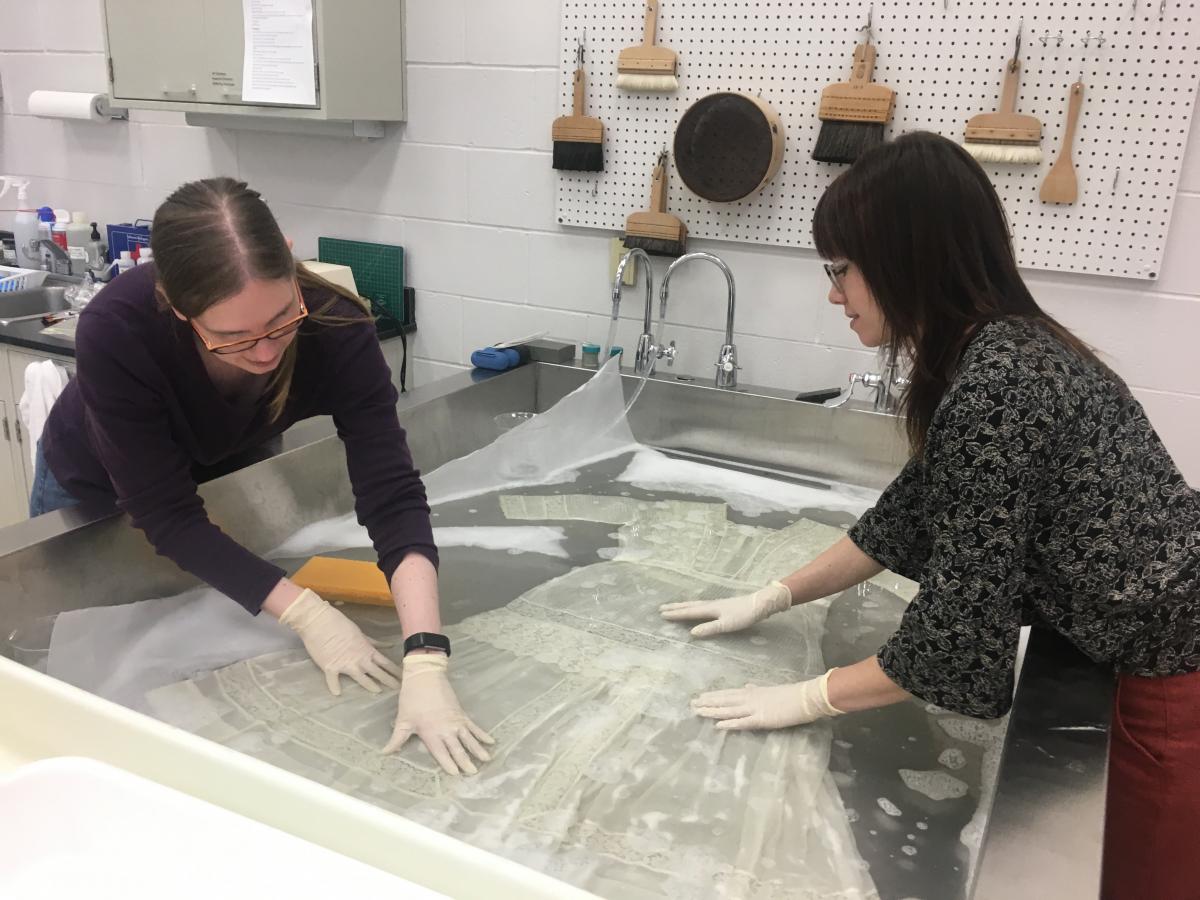
Vonnda Shaw, Senior Conservation Technician, and Rebecca Cashman, Objects Conservator, hand wash the cotton dress in a gentle detergent.
A number of dresses from the era are included in the exhibit. This white cotton dress belonged to Helen Nance Anderson. She was the daughter of former governor Albinus Nance and wife of former State Senator Walter Lincoln Anderson.
The cotton was worn and had yellowed over time. It was gently hand-washed by Objects Conservator Rebecca Cashman and Senior Conservation Technician Vonnda Shaw in a safe detergent and carefully rinsed in deionized water. It was then laid out on cotton cheesecloth over a screen to promote airflow when drying. Additional cheesecloth was laid over the top to absorb water from the surface of the dress and prevent tide lines from forming.
You can see these items and many others when Votes For Women: Nebraska’s Suffrage Story opens on August 16th.



